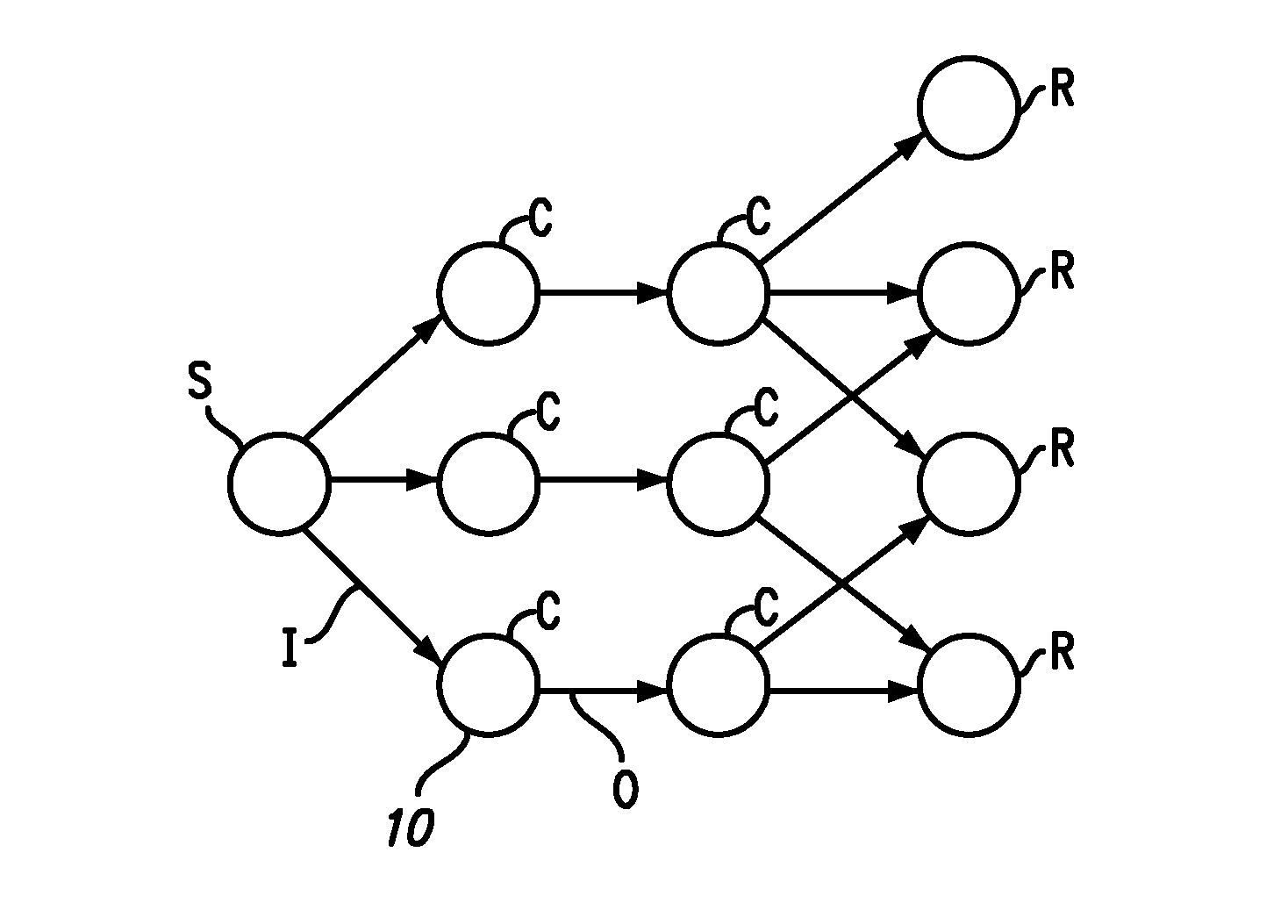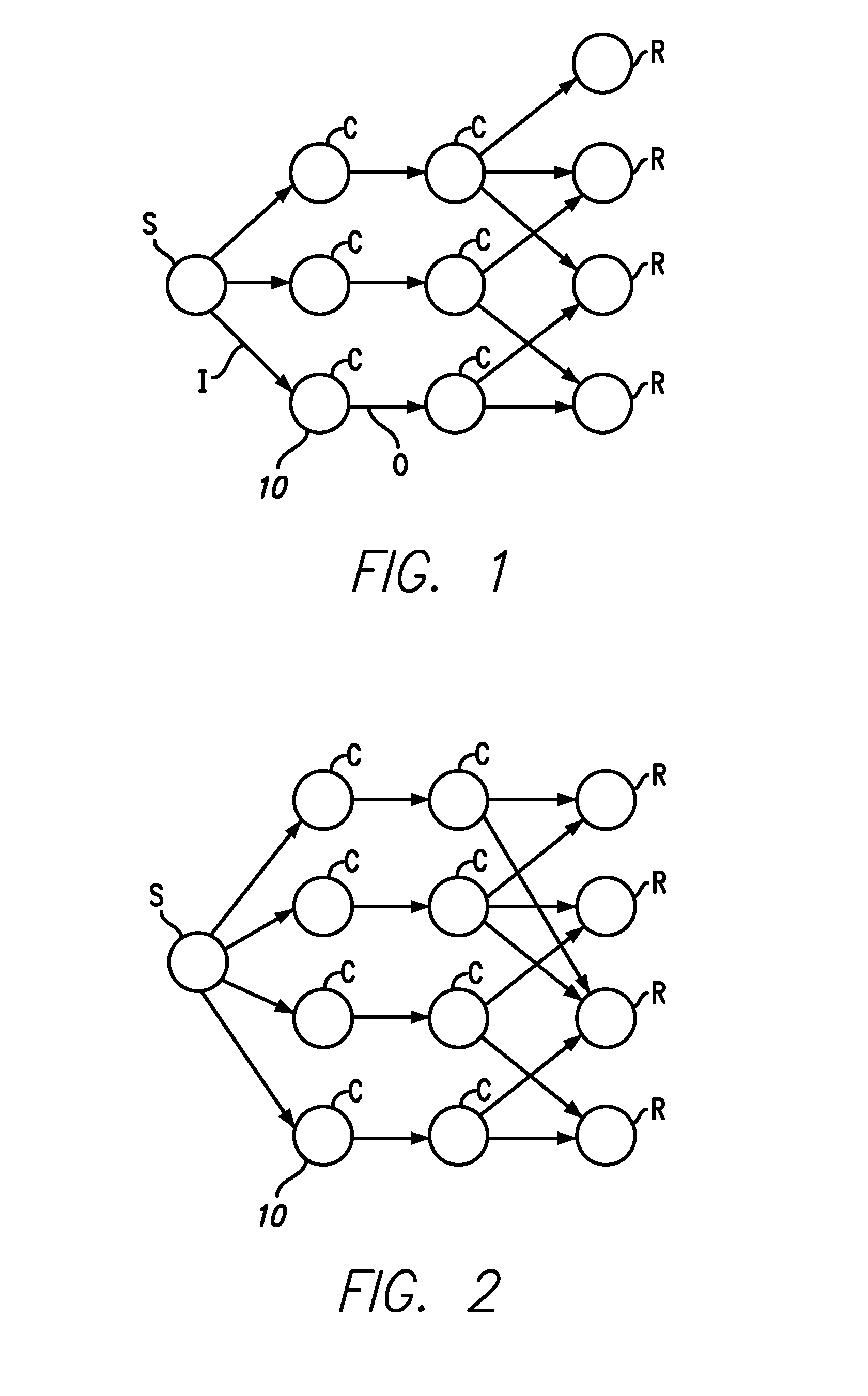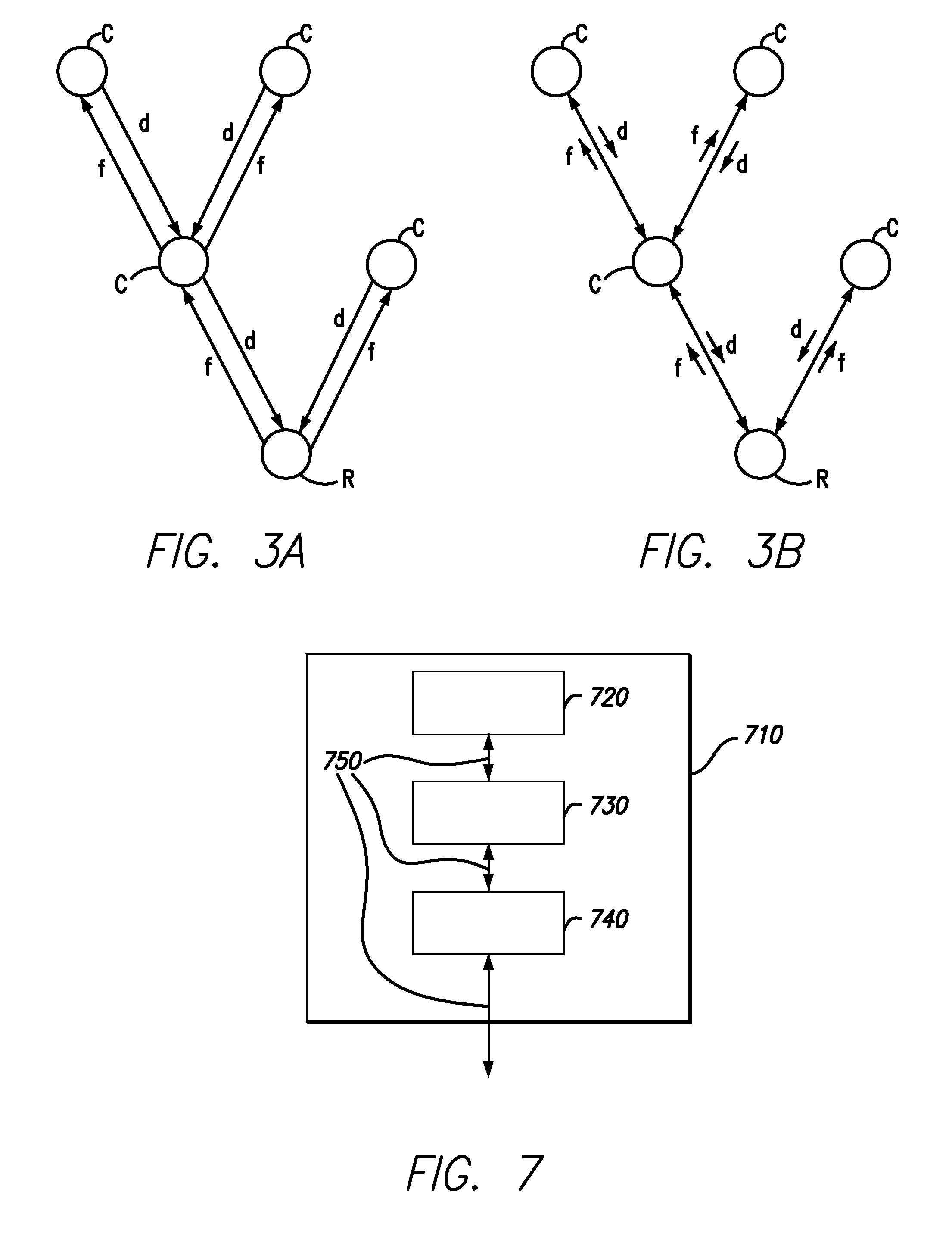Deterministic distributed network coding
a distributed network and coding technology, applied in data switching networks, frequency-division multiplexes, instruments, etc., can solve the problems of high complexity, complex prior deterministic network code designs, and high complexity, so as to improve the choice of coefficients, improve the rate of information delivery, and high complexity
- Summary
- Abstract
- Description
- Claims
- Application Information
AI Technical Summary
Benefits of technology
Problems solved by technology
Method used
Image
Examples
Embodiment Construction
[0025]A first embodiment of the present disclosure concerns network coding over acyclic subgraphs of networks. Such acyclic subgraphs can be constructed using, for example, the techniques in D. S. Lun, N. Ratnakar, M. Medard, R. Koetter, D. R. Karger, T. Ho, and E. Ahmed, “Minimum-Cost Multicast over Coded Packet Networks,” IEEE Transactions on Information Theory, 52 (6), pp. 2608-2623, June 2006, incorporated herein by reference in its entirety. Data from the sources is transmitted over the acyclic subgraph to the receivers. If the network has bidirectional links or additional links in the reverse direction from the receiver nodes to intermediate nodes in the subgraph, feedback from the receivers can be used to improve the rate of information delivery.
[0026]FIGS. 1 and 2 show two examples of acyclic networks having source nodes S and receiver nodes R, and a plurality of intermediate nodes C. The intermediate nodes allow communication of source processes to each receiver node R. The...
PUM
 Login to View More
Login to View More Abstract
Description
Claims
Application Information
 Login to View More
Login to View More - R&D
- Intellectual Property
- Life Sciences
- Materials
- Tech Scout
- Unparalleled Data Quality
- Higher Quality Content
- 60% Fewer Hallucinations
Browse by: Latest US Patents, China's latest patents, Technical Efficacy Thesaurus, Application Domain, Technology Topic, Popular Technical Reports.
© 2025 PatSnap. All rights reserved.Legal|Privacy policy|Modern Slavery Act Transparency Statement|Sitemap|About US| Contact US: help@patsnap.com



